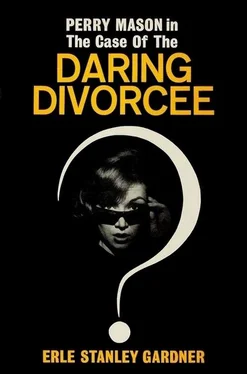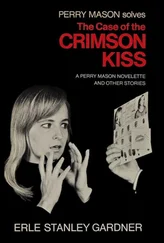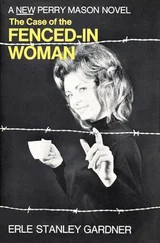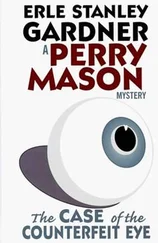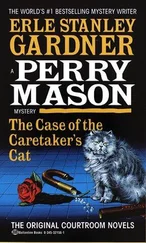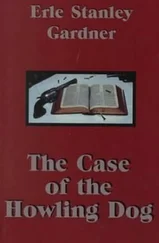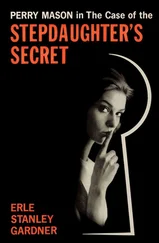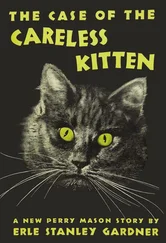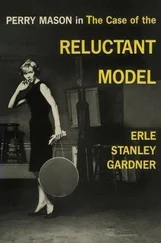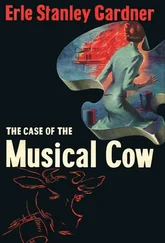“So what did you do?”
“I went to Mr. Mason’s office.”
“And what did you find there?”
“I found the defendant there.”
“Did you find the gun Mr. Mason had referred to?”
“Not then.”
“Did you subsequently locate it?”
“Just a moment,” Mason said. “I object to that question as calling for a conclusion of the witness.”
“Why, he certainly can answer whether or not he eventually discovered the gun,” Ellis said.
“No, he can’t,” Mason said, “because he has no way of knowing whether the gun he discovered was the same gun that I had referred to over the telephone, or the same gun that I had in my office.”
“Oh, Your Honor,” Ellis said, “this is simply quibbling. We can trace that gun from the woman’s handbag to Mason’s desk, from Mason’s desk to the office of Garvin Hastings, where one of the employees, Simley Beason, had concealed it, and then we can trace it into the possession of Lieutenant Tragg.”
“Then go ahead and trace it,” Mason said, “but don’t ask this witness if the gun that he eventually recovered was the same gun that was in my office drawer. That’s a conclusion.”
“All right, all right,” Ellis conceded with poor grace. “I’ll withdraw the question and I’ll ask the witness this question: Did you inquire about the gun when you went to Mr. Mason’s office?”
“I did.”
“Did you ask him to produce it?”
“I did.”
“And what, if anything, did Mr. Mason do in connection with that request?”
“He opened a drawer in the right-hand side of his desk and seemed very much surprised when he found that the drawer was empty.”
Morton Ellis said, “I will ask you, Lieutenant Tragg, if you have certified copies of the firearms record in your possession showing the sales of firearms to Garvin S. Hastings.”
“I have.”
“Will you please give me those records?”
Tragg passed over two sheets of paper.
“What do these records show generally, Lieutenant?”
“Those are official documents which are kept in accordance with the provisions of California law. They show the purchase of two guns from The Sportsman Supply Center.”
“And what do these documents cover, Lieutenant?”
“The purchase of two weapons, two Smith and Wesson thirty-eight-caliber revolvers of similar model. The first one is for a Smith and Wesson gun with a two-and-a-half inch barrel, number C 48809, which was sold on the date appearing on this sheet. The other was purchased some months later and is for a similar model Smith and Wesson gun, with the serial number C 232721.”
“Very well. Now will you tell US what conversations you had with Perry Mason, as attorney for the defendant, in connection with this firearm which he told you about and which he said he was unable to produce after you had reached his office.”
“Mr. Mason told me that he had taken a gun from the defendant’s handbag which had been left in his office; that he had placed that gun in the upper right-hand drawer of his desk; that the gun had disappeared.”
“Now, when did this conversation take place, Lieutenant?”
“This was on Tuesday, the fifth.”
“And did Mr. Mason tell you what he had done with reference to trying to locate that gun?”
“He did, at a later conversation.”
“What did he say?”
“He said that he had made an investigation himself and through his private detective, Paul Drake, head of the Drake Detective Agency; that as a result of that investigation he found that a man had entered his office on the morning of Tuesday, the fifth, at about the time the charwoman was cleaning up the office; that this man had been carrying a brief case and had represented himself to be Perry Mason — if not in direct words, at least by his conduct — and had gone on into the office, stayed there for about ten minutes and then had left.
“Mr. Mason told me that by a process of reasoning and detective work he had located this man and learned his identity, that the man was Simley Beason, the office manager of the Hastings Enterprises.”
“Did he tell you anything else?”
“He said that Simley Beason had taken that gun and had wrapped it up in paper and then sealed the paper, and had deposited the package in the bottom of a golf bag.”
“And then what?”
“He said that Mr. Beason in his presence had telephoned his secretary — Beason’s secretary — to take the gun from the golf bag and bring it to Mason’s office; that when the secretary arrived it appeared the wrappings had been tampered with.”
“And did Mr. Mason say what he did with reference to that gun?”
“He called me on the telephone and told me that he had the gun for me and later on told me that he also had the wrappings in a box which I could look over for fingerprints if I so desired.”
“And what did you do?”
“I went to Mr. Mason’s office and picked up the gun.”
“Did you subsequently make ballistics tests with that gun?”
“I did.”
“And did you try to match up the specimen bullets which you fired from that gun with the fatal bullets, one of which had been taken from the body of Garvin Hastings, and one of which had been taken from the mattress?”
“I did.”
“What did you find out?”
“The fatal bullets were fired from this weapon.”
“I show you a weapon, being a Smith and Wesson revolver, number C 48809, and ask you if you recognize this weapon.”
“I do, yes, sir. It has my mark on it and I have a note of the number.”
“Is that the gun that you received from Mr. Mason?”
“It is.”
“Lieutenant, did you examine this gun for fingerprints?”
“I did.”
“Did you find any fingerprints on it?”
“At the time I first examined the gun I didn’t find any fingerprints on it. I dusted the gun with fingerprint powder for the purpose of developing latent fingerprints. Nothing was developed that would be of help. Later on, however, when I got the gun at headquarters I found that there was a dried fingerprint on the weapon. This fingerprint did not take powder because there was no moisture left in it. It was a print which had thoroughly dried. It had been handled by some person whose finger contained some sticky substance, such perhaps as sweetened saliva, or perhaps which had come from moist tobacco. Anyway the fingerprint could be observed in a certain light.”
“Did you photograph that fingerprint?”
“Yes, sir.”
“You have that photograph here?”
“Yes, sir.”
“Now, have you checked that fingerprint to find whose finger made that print?”
“Yes, sir.”
“Whose print?”
“That print was the middle finger of the right hand of the defendant, Adelle Hastings.”
“I would like to have this revolver introduced in evidence, if the Court please, as prosecution’s Exhibit B-12.”
“Just a moment,” Mason said. “Before I either stipulate the gun may be received in evidence or object to it, I would like the privilege of asking questions on voir dire .”
“Very well,” Judge Fallon ruled. “You may interrogate the witness.”
“Lieutenant, you have stated that I told you I had the gun. Now, isn’t it a fact that what I told you was that I had a gun?”
“I think you said you had recovered the gun.”
“That had been taken from my desk drawer?”
“That was my understanding.”
“Did I tell you that the gun came from the defendant’s handbag?”
“Now wait a minute,” Tragg said. “Actually, I believe the conversation about the gun was with you, and then it appeared the gun had disappeared and then I believe your secretary called me and told me that the gun which had been misplaced had now been found and was available.”
Читать дальше
